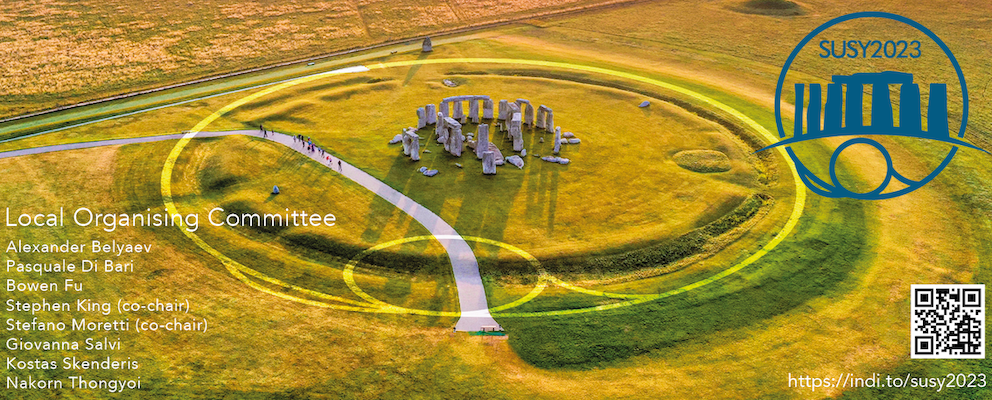I will present the most minimal realistic SU(5) unification model to date. The minimality of the field content of the model dictates that the neutrinos are purely Majorana fermions while one of the three neutrinos is a massless particle. The model also connects the neutrino mass generation mechanism with the experimentally observed mass disparity between the down-type quarks and charged...
What is the minimal viable renormalizable SU(5) GUT with representations no higher than adjoints? In this talk I discuss an SU(5) model in which vectorlike fermions $5_F+\overline 5_F$ as well as two copies of $15_H$ Higgs fields are introduced in order to accommodate for correct charged fermion and neutrino masses and to reproduce the matter-antimatter asymmetry of the universe. The presented...
In this work, we present a comprehensive study of the phase diagram of supersymmetric QCD with $N_{f}=N_{c}+1$ flavors perturbed by Anomaly Mediated Supersymmetry Breaking (AMSB). We extend the analysis done before for the s-confining ASQCD theories in three different directions. Previously it was assumed that it is possible to ignore terms proportional to $m_{3/2}^{2}$ when $m_{3/2}$ is...
We generalise the Missing Partner Mechanism to split the electron-like states from the coloured ones of vector-like $SU(5)$ 10-plets. Together with the extra light weak doublets from the Double Missing Partner Mechanism (DMPM), this realises gauge coupling unification in the presence of a light weak triplet and colour octet - the characteristic light relics from the adjoint in $SU(5)$ GUT...
The "minimal" potentially realistic non-supersymmetric $\mathrm{SO}(10)$ GUT model has a scalar sector consisting of representations $45+126+10$. The $45+126$ part breaks $\mathrm{SO}(10)$ to the Standard Model symmetry, while $126+10$ should enable a realistic Yukawa sector. This model is expected to facilitate an unusually robust proton decay prediction, but its analysis is impeded by...
In this work, we construct promising model building routes towards SO(10) GUT inflation. We consider a supersymmetric framework within which the so-called doublet-triplet splitting problem is solved without introducing fine-tuning. Additionally, realistic fermion masses and mixings, gauge coupling unification, and cosmic inflation are incorporated by utilizing superfields with representations...
The difficulty in realizing the metastable de Sitter vacuum in the string model has been considered in light of the distance conjecture. In this talk, we investigate the Type IIB compactifications containing the warped throat and point out that the uplift potential produced by anti-D3 branes satisfies the scaling behavior with respect to the tower mass scale, hence can be directly connected to...
A concrete possibility for String Phenomenology consists in the study of vacua in which supersymmetry is broken at the string scale. Unfortunately such scenarios are often plagued by instabilities coming from tadpoles and perturbative corrections that modifies the background geometry. Although the fate of these vacua is not known in general, they rely on absence of tachyons in the tree level...
The volume-preserving diffeomorphism is a key feature that characterizes the large constant R-R ($p-1$)-form field background in a D$p$-brane theory. It represents a symmetry of the theory that preserves the volume of space. To describe this symmetry, we introduce the concept of the ($p-1$)-bracket, which generates the volume-preserving diffeomorphism. The ($p-1$)-bracket is a mathematical...
Abstract: The primary ingredient for studying the phases of a quantum field theory is the effective action. Though obtaining an exact form is beyond the scope of the existing techniques, approximate expressions using perturbative methods which to the leading order involve computation of one-loop determinants are available. In this talk which is based on our papers [1] and [2], I will describe...
Projective superspace formalism is a manifestly supersymmetric approach to describe extended supersymmetric field theories off-shell. I will describe this method and discuss general aspects of gauge theories in this setting. Then, the 4-dimensional N=2 Yang-Mills theory as well as 3-dimensional N=3 Chern-Simons will be treated in this projective formalism. Particularly, the field strength and...

